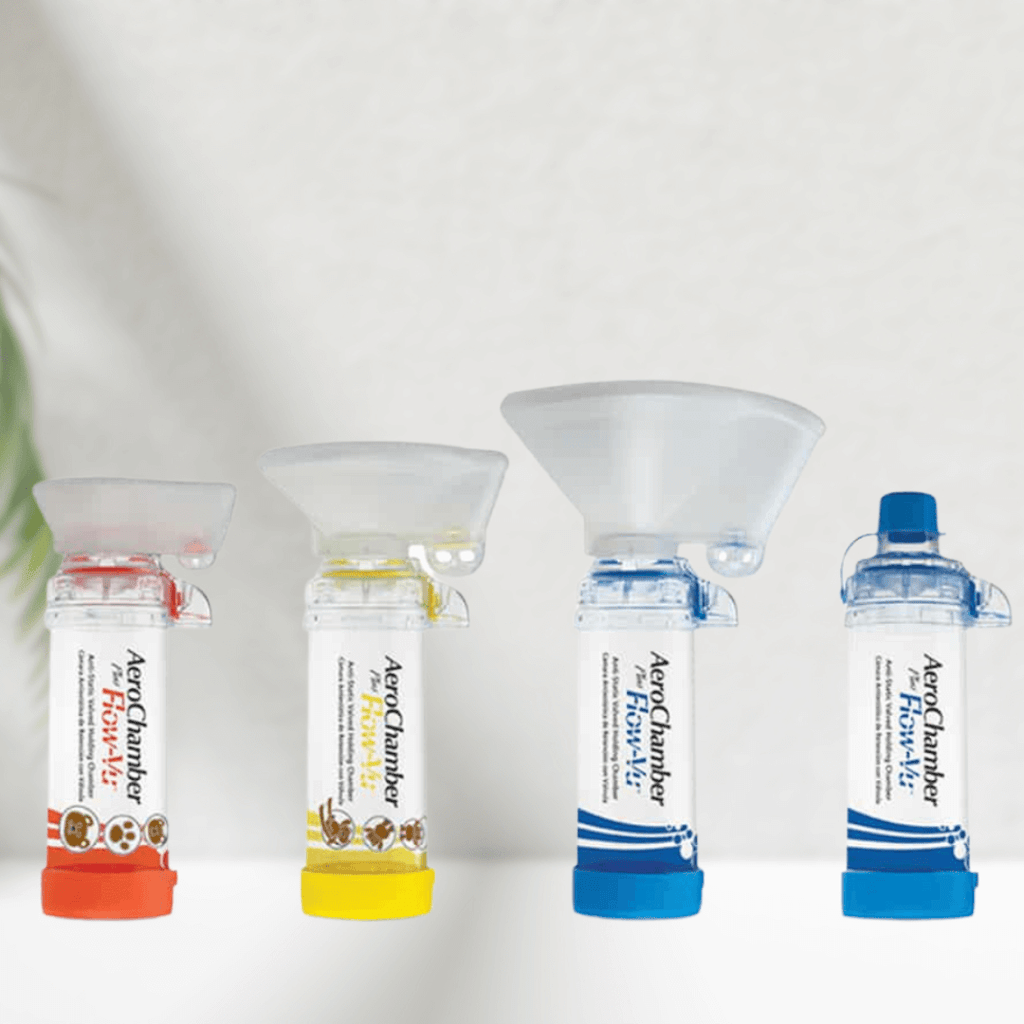Struggling with Puffers?!? Or Puffers with minimal effects?
BY Rafael Mendonca, RRT Manager
Oct 5, 2021

A Simple Device to make your Life and Breathing much Easier
Not to worry, we have a solution for this. It is called an Aerochamber or Spacer. Many people who use a Metered Dose Inhalers (MDI), or commonly known as “puffers”, have a difficult time coordinating the actuation and breathing simultaneously. Furthermore, without a spacer, about 90% of the medication from an MDI will be deposited in the back of the throat. 5% of that will be able to get into the large airways where there is minimal if any inflammation and only the last 5% will be able to navigate further down to the distal airways to act where the swelling is happening. Can you see how it would be hard to get actual relief without a spacer?
In the many years of performing respiratory procedures and teaching about spacers, there are a few common themes:
"I don't use it because it's too bulky"
"I don't use it because its too cumbersome"
"I don't feel any difference!"

These are just a few examples of what I have heard in my career as a Respiratory Therapist. The truth is, the Spacer (Aerochamber) DOES WORK. It is not voodoo nor a money grab. There is a reason they are made. I'll clarify..
The spacers are made to reduce the speed of which aerosols are expelled from the MDI. By slowing the particles down, we are able to get majority of the medication suspended in the air and take a controlled deep slow breath to get maximum medication delivery to the distal airways where the swelling is actually going on. This is simply a gas /aerosol physics fact and a fact is a theory that cannot be proven wrong otherwise.
As much as you may not think it works, hindsight can be a gift. If what we are doing currently still is not that effective and we are doing what WE think is right and not what SCIENCE has proven to be right, any guesses what the end result is? I think you got it: Shortness of breath.
Another erroneous habit that people tend to do is to press their puffers twice in a row.
This second actuation will only spray out propellant and not medication. The proper procedure is outlined:
Insert the inhaler/canister into Aerochamber/Spacer and shake vigorously.
Breathe out.
Put the spacer mouthpiece into your mouth.
Press down ONCE on the inhaler once.
Breathe in slowly (for 3-5 seconds).
If the spacer whistles, breathe in slower.
Hold breath for 10 seconds.
Exhale.
Wait 30 seconds before 2nd puff and repeat Steps 1 through 7



